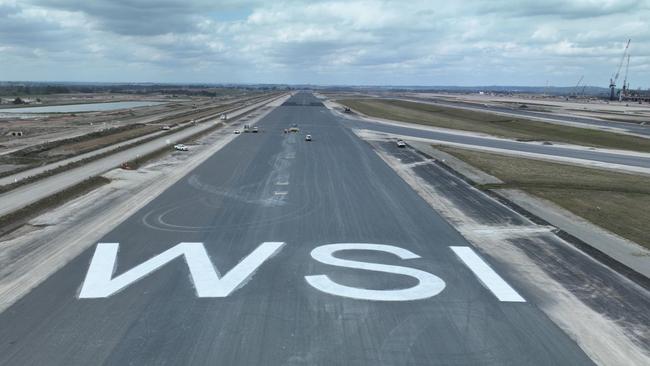International Air Transport Association’s vote of confidence in Western Sydney Airport
There’s LAX, JFK and SYD and now there’s WSI — the designated code for Western Sydney International airport.

There’s LAX, JFK and SYD and now there’s WSI.
Western Sydney International airport has been given its three-letter code by the International Air Transport Association in a show of confidence in the new gateway.
Typically issued within 12-months of opening, the code has been issued more than three-years out, reflecting the airport’s importance to Australia’s aviation landscape.
Almost 40-years in the planning, the airport is seen as vital to Sydney’s growth, with the existing Kingsford Smith Airport at capacity in peak periods.
“This will be an airport for all of Sydney, ultimately growing to become the city’s biggest, but we’re proud that it is home in Western Sydney,” said Western Sydney International Airport chair Paul O’Sullivan.
“Western Sydney is truly Sydney’s cultural heartland and with WSI now confirmed as one of our most important global identifiers, our role connecting the world to Sydney via this exciting and diverse region is clear.”
As well as booking sites and airline apps, the code will appear on bag-tags when flights begin operating out of WSI in late 2026.
Each code is unique to the airport to which it’s assigned and is considered essential to the smooth running of IT systems for passenger bookings and freight.
The Qantas Group and Virgin Australia both advocated to IATA for the early designation of Western Sydney’s code, in support of the long awaited second airport.
In doing so, the airlines indicated their intention to use WSI when it finally opened.
Mr O’Sullivan said there had been enormous interest from airlines, even outside of Australia, excited for what the new aviation capacity and 24/7 operations would mean.
“Over the next couple of years, we’ll be excited to let our future passengers across Sydney know which airlines will take them to which destinations from WSI,” he said.
Airport codes first started to appear in the 1930s as typically two-letters before moving to three in the late 1940s as more airports opened.
IATA then took control of the process in the 1960s to ensure there was no doubling up of codes, and to standardise the system.
Some airports like LAX in Los Angeles and JFK in New York have incorporated their codes into marketing material to the point where they’re as well known as the city they serve.

Even Sioux City in Iowa which has the unfortunate airport code of SUX has taken a playful approach, offering a range of merchandise with the slogan “FLY SUX”.
Mr O’Sullivan was confident WSI would become the most important piece of infrastructure in the region, driving investment in transport, job training and the social network.
“As we build the airport, we’ve already invested around $400m with Western Sydney businesses which is just the beginning of WSI bringing higher quality jobs closer to home both now and into the future,” he said.
“People’s children and their children will have access to great jobs in the west, if their interest is in engineering, cyber and other security, sustainability, aviation or many other jobs of the future the opportunity will be here in Western Sydney.”






To join the conversation, please log in. Don't have an account? Register
Join the conversation, you are commenting as Logout